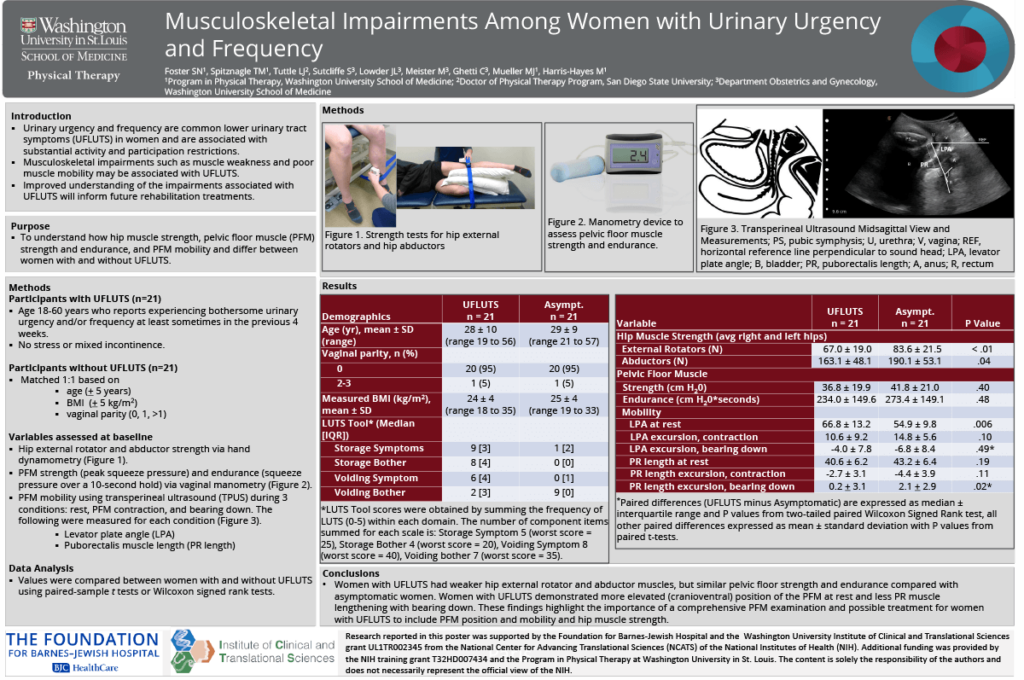Introduction: Urgency and frequency are common lower urinary tract symptoms (UFLUTS) in women. There is limited evidence to guide physical therapist-led treatment. The focus of this project was to understand how pelvic floor muscle (PFM) strength and endurance, PFM mobility, and hip muscle strength differ between women with and without UFLUTS.
Methods: Women with (n=21) and without UFLUTS (n=21) were matched on age, body mass index, and vaginal parity. An examiner measured participants’ (1) hip external rotator and abductor strength via dynamometry (maximum voluntary effort against fixed resistance), (2) pelvic floor muscle strength (peak squeeze pressure) and endurance (squeeze pressure over a 10-second hold) via vaginal manometry, and (3) PFM mobility using transperineal ultrasound (TPUS). TPUS videos were obtained during 3 conditions: rest, PFM contraction, and bearing down. Levator plate angle (LPA) and puborectalis length (PR length), were measured for each condition. Values were compared between cases and controls with paired-sample t tests or Wilcoxon signed rank tests.
Results: Hip external rotation [67.0 (SD 19.00) N vs 83.6 (SD 21.5) N; P = .005] and hip abduction strength [163.1 (SD 48.1) N vs 190.1 (SD 53.1) N; P = .04] were significantly lower in women with UFLUTS than in those without. There was no significant difference in pelvic floor strength [36.8 (SD 19.9) cmH2O vs 41.8 (SD 21.0) cmH2O; P = .40] or endurance [234.0 (SD 149.6) cmH2O × seconds vs 273.4 (SD 149.1) cmH2O × seconds; P = .24]. Women with UFLUTS demonstrated greater LPA at rest [66.8 (SD 13.2) degrees vs 54.9 (SD 9.8) degrees; P=0.006], and less PR lengthening from rest to bearing down [0.2 (SD 3.1) mm vs 2.1 (SD 2.9) mm; P=.03].
Impact: Women with UFLUTS had weaker hip external rotator and abductor muscles, but similar pelvic floor strength and endurance compared with controls. Women with UFLUTS demonstrated more elevated (cranioventral) position of the PFM at rest and less PR muscle lengthening with bearing down. These findings highlight the importance of a comprehensive PFM examination and possible treatment for women with UF-LUTS to include PFM position and mobility and hip muscle strength.
Organization – Washington University in St. Louis
Harris-Hayes M, Foster Sn, Spitznagle TM, Tuttle LJ, Sutcliffe S, Steger-May K, Lowder JL, Meister MR, Ghetti C, Wang J, Burlis T, Mueller MJ
